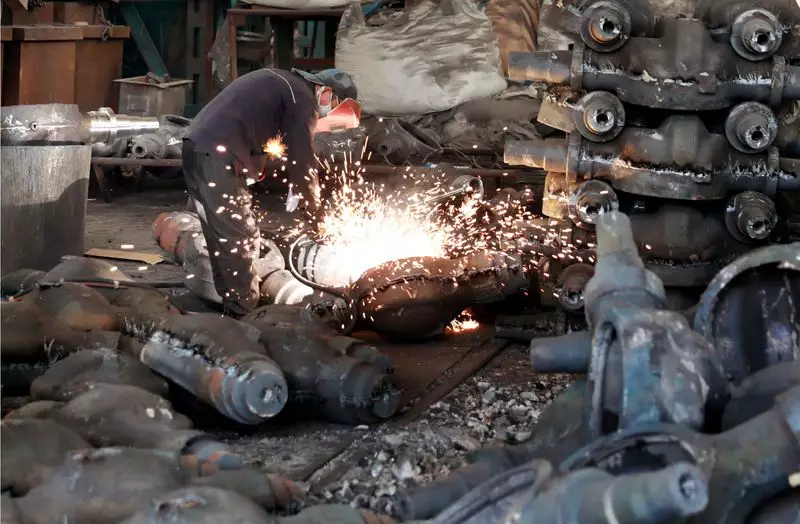China’s manufacturing activity faced a setback in June, marking the second consecutive month of decline. The National Bureau of Statistics revealed that the purchasing managers’ index (PMI) remained stagnant at 49.5, below the 50-mark that signifies growth. Despite some positive indicators, such as the production sub-index being above 50, other key factors like new orders, raw material stocks, employment, supplier delivery times, and new export orders were all in contractionary territory. This points to a struggle within the manufacturing sector to fully recover and adapt to changing demands.
On the other hand, the services sector in China also faced challenges in June, with activity slipping to a five-month low. The non-manufacturing PMI, which includes services and construction, dropped to 50.5 from 51.1 in May. The services PMI hit a low of 50.2, indicating a slowdown in the sector’s growth. Additionally, the construction PMI declined to 52.3, the lowest reading since July last year. These figures highlight the overall fragility of China’s economic recovery, especially in the face of ongoing domestic and international pressures.
Analysts anticipate that the Chinese government will introduce more policy support measures in the near future to boost economic growth. While monetary policy options are limited due to currency pressures, fiscal stimulus is expected to play a significant role in driving domestic consumption. The government’s commitment to increasing fiscal support is seen as a crucial step in accelerating economic recovery and reducing the economy’s dependence on the property sector.
Despite efforts to stimulate growth, challenges such as high local-government debt and deflationary pressures continue to cast a shadow over China’s economic prospects. While various measures have been implemented since last October, there is skepticism among investors and factory owners regarding the effectiveness of these initiatives. The need to diversify growth engines and reduce reliance on the property sector remains a pressing issue for Chinese officials.
Premier Li Qiang expressed optimism about China’s economic trajectory, citing the growth of new industries as a catalyst for healthy development. However, the upcoming Third Plenum meeting will be closely monitored by economists and investors for further insights into the country’s economic strategy. The need for sustainable and inclusive growth remains paramount as China navigates the complexities of both domestic and global economic challenges.

